UMass Law School
Arc of Justice Atrium
My creative partner Annie Jonas and I were honored to design and create a permanent room installation for the newly renovated Arc of Justice Atrium of the UMass Law School. The Atrium and the art were dedicated on November 16, 2021.
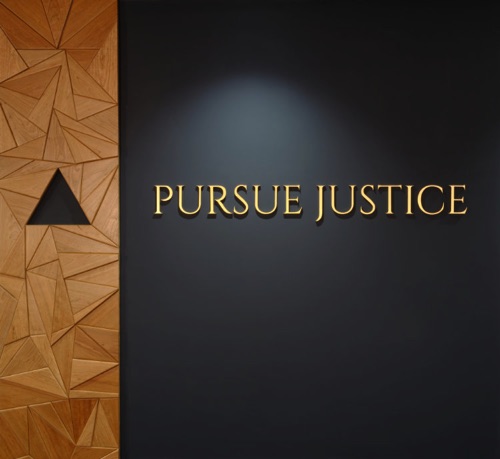
Entry Wall (Annie Jonas)
All photos by Tri-Color Digital Imaging, New Bedford, MA
A Call to Action
The Arc of Justice Atrium is the central gathering place of the University of Massachusetts Law School. The art in this room was placed here to inspire all those who pass through the space.
My sculptures are a call to action. They express the values of the school, giving a visual voice to my many interviews with UMass Law students, faculty, and leadership. They remind us that justice doesn't come to us uninvited but must be pursued. To secure equal human rights for everyone, we must forever work for inclusion, equitable treatment, and legal access for all.
To complement my sculptures, and as discussion examples of social justice in action, I selected three paintings created by accomplished graduates of the UMass Dartmouth College of Visual and Performing Arts MFA program. Their art offers us “case studies” by which to contemplate tangible examples of social justice issues.
The creativity of artist Annie Jonas was integral to the life and development of the entire installation. Her many contributions kept the art true to the space.
The art was sponsored by Dr. Jean MacCormack, former Chancellor of UMass Dartmouth, believer in the messaging power of art, and tireless advocate for the establishment of UMass Law.
John Magnan
November 2021
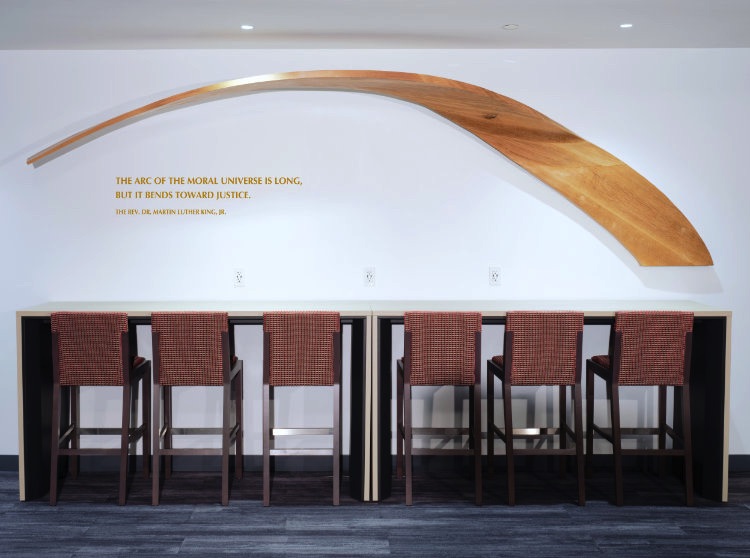
The Arc of Justice (John Magnan and Annie Jonas)
The Arc of Justice
As he concluded his remarks at the end of the 1965 Selma to Montgomery march, The Rev. Dr. Martin Luther King, Jr. inspired us with these words:
How long will justice be crucified, and truth buried?
I come to say to you this afternoon, however difficult the moment, however frustrating the hour, it will not be long, because "truth crushed to earth will rise again."
How long? Not long, because "no lie can live forever."
How long? Not long, because "you shall reap what you sow."
How long? Not long, because the arc of the moral universe is long, but it bends toward justice.
Even as he inspired us, Dr. King knew the road to justice would not be easy and direct. He knew the journey to justice would have its advances and setbacks, with unexpected twists and turns.
In this sculpture I am capturing the unpredictability of that journey. The arc is not perfect; it bends and twists. But it is ultimately hopeful, as it leads us to the doors beyond it, pointing to the moot court room where tomorrow's defenders of justice practice and learn
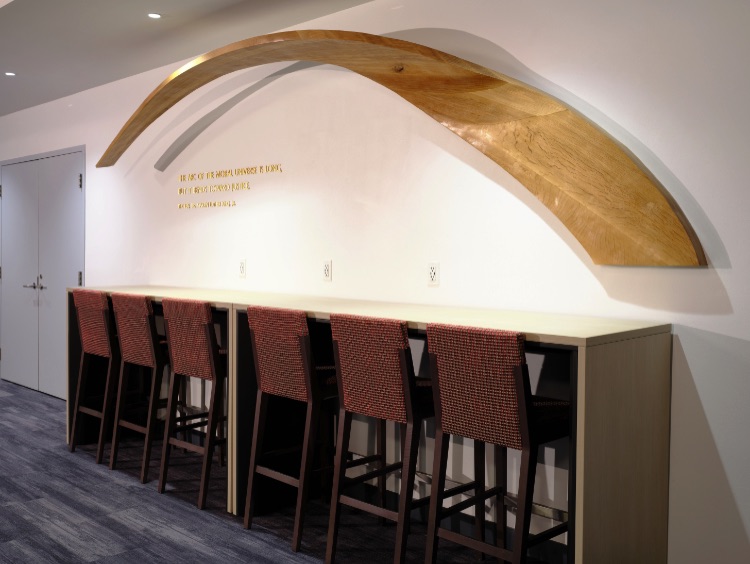
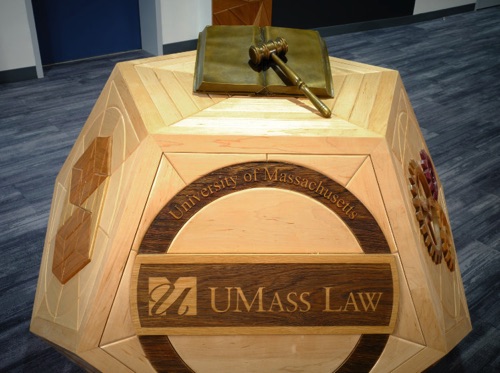
Plato (John Magnan
I named this piece after the philosopher Plato. I chose the multifaceted dodecahedron shape, one of the five “Platonic Solids,” as a symbolic acknowledgement of the ancient philosopher's influence on Western thought. This form gave me the surfaces I wanted for adding the designs.
Interviews with UMass Law students helped me create this sculpture. The ideas expressed on the form were inspired by student descriptions of the law school experience.
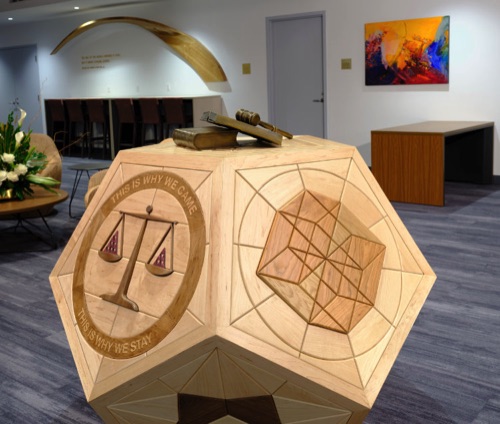
Scales of Justice
In this diagram the weights on the scales are unequal, yet the scales remain balanced, reminding us that social justice calls for equitable treatment between diverse groups.
The students want others to know that being able to help others is why they are in law school, and it's why they stay.
The Tesseract
Students made a point of telling me about how much they rely on each other for successfully navigating law school. The idea of symbolizing their networking with a tesseract image come from one student who likened their many and varied interactions to the complexity of this multidimensional form.
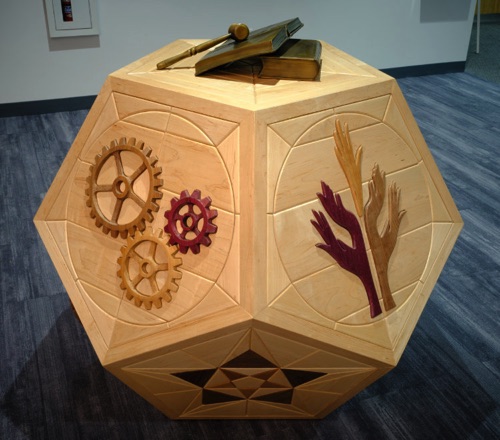
Books with Gavel
The bronze casting was made using books from the law library collection. Together with the gavel they visually foretell the future careers of the graduates.
Turning Gears
In my conversations with law students, they would sometimes laugh ironically about how much work their courses require. These gears recognize the grind of their many hours of hard work and study.
The Reaching Hands
Students told me that they look forward to using their legal knowledge to help people. The image of the hands can be seen as the future attorneys reaching out to help others, and as those in need reaching out for help.

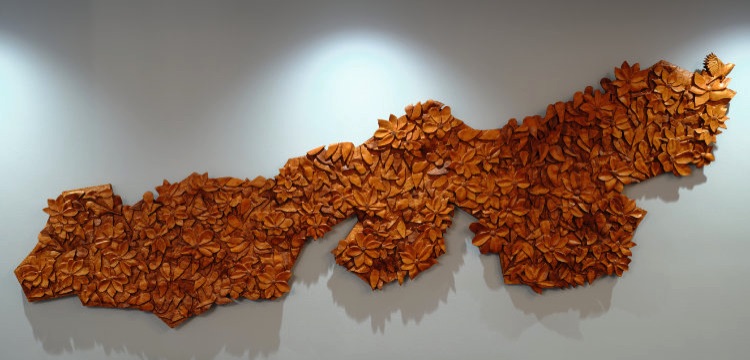
The Joy of Access (John Magnan)
Joy of Access
For many in need of legal assistance, the system is mysterious and impenetrable. It can seem threatening and frightening. But with legal representation and explanation, the fog can lift, the door can open, and one can begin to see a way forward.
When our laws are at work for the benefit of everyone, including the underrepresented and underserved, and as those in need gain access to justice, the weight of uncertainty and dread is lightened.
There is relief. There is hope.
There is joy.
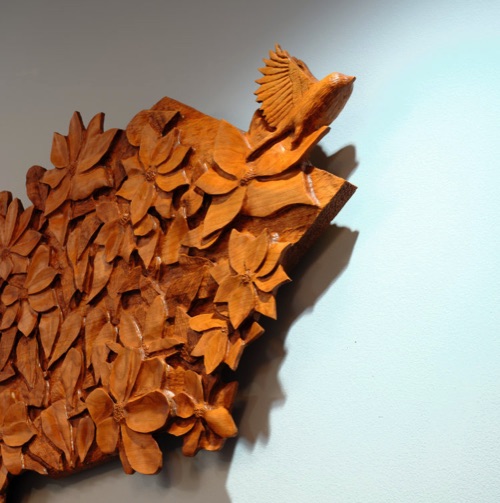
Paintings
To fully express the UMass Law mission, Annie and I selected paintings that would stimulate legal discussions. We reviewed the work of accomplished UMass Dartmouth MFA graduates and chose three.
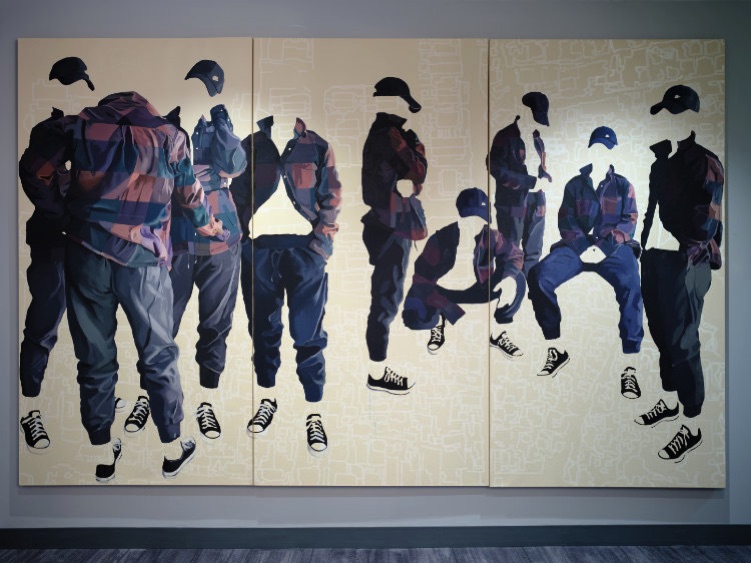
Curbside (Taylor Maroney)
Selected by John Magnan and Annie Jonas
Artist Statement
As a white, queer, trans-nonbinary artist, I am exploring through paint how the bodies or identities with which a person enters the world determine that which they are allowed to inhabit. Deleting the body of the figure points to the unseen, ubiquitous nature of the habitual actions that maintain whiteness. I am exposing these covert actions and potentials by creating a visible marker for them. By doing this I seek to disrupt rather than contribute to the maintenance of white, western, figurative representation. The deletion also allows the bodies to evolve into a genderless presence. In this capacity the paintings become a wish, a safe space for me to see myself how I want others to see me. I am also acknowledging the queer, trans bodies that have been largely left out of contemporary and historical figurative representation.
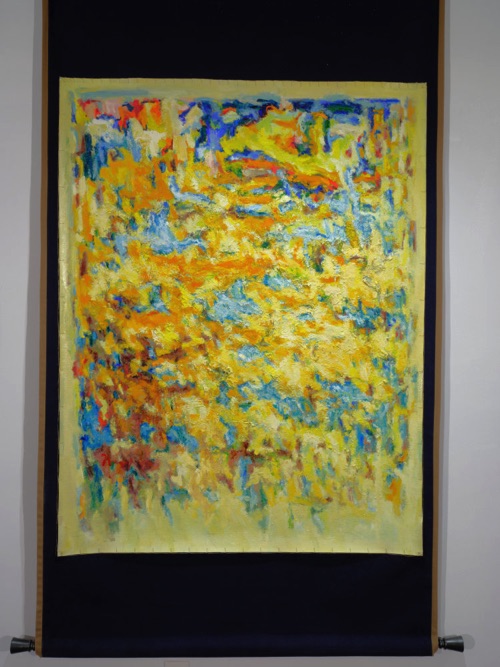
Colors from the Other World (Robert Najlis)
Selected by John Magnan and Annie Jonas
Artist Statement
Listen to the confluent streams that weave together the webs of life. Every being is a connected presence that affects and is affected by the simultaneously created world around them.
This painting combines Western and Chinese artistic principles. The name, Colors from the Other World, refers to colors used within the painting that were inspired by a style of Chinese painting called blue-green landscape painting. The use of these colors in China was influenced by other countries and cultures, which were transmitted through the Silk Road, and were often used to indicate other times and realms. While we often tend to begin our thinking from our perspective, cross-cultural concerns can begin from any cultural vantage point and move out towards any other. In the wide scope of life, though the human world is small, it is still multifaceted, and different starting points will yield distinct end points.
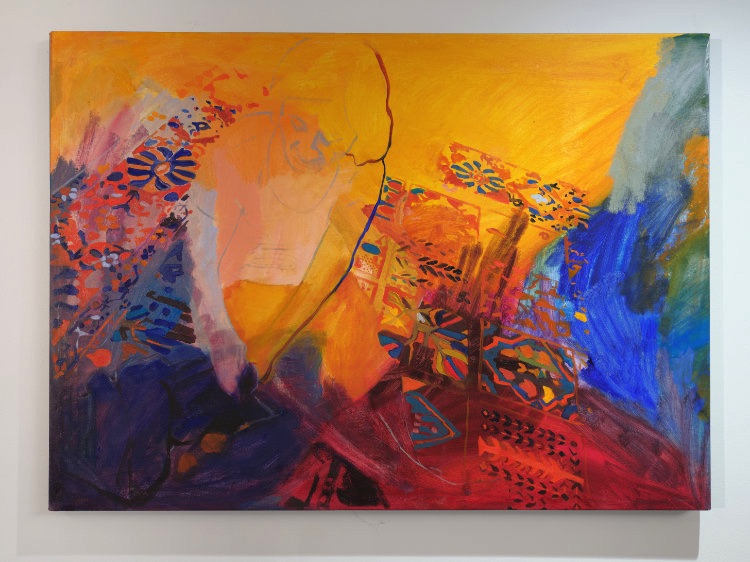
Mom (Shabnam Jannesari)
Selected by John Magnan and Annie Jonas
Artist Statement
Iranian patriarchal society censors female independence, restricting where women can go and what they can access. Because of these rules, they must cover their bodies with a hijab. Nonetheless, many women are conflicted, overtly following the rules of their families/society and covertly fighting these limitations by pushing the boundaries and breaking the rules. Those who ascribe to cultural religious prescription believe that women's hair attracts men and that a woman's body spawns temptation and guilt. I am personally aware of the effects of these values. One of my friends was a victim of an acid attack because she was not wearing an “appropriate” hijab. This heinous attack limited her mobility and resulted in social isolation.
My paintings express my personal story, but they also reflect the life of Iranians and of all suppressed women. I address the complexity of Iranian female identity in the imaginary space that departs from reality, producing a special, supportive, world within the world.
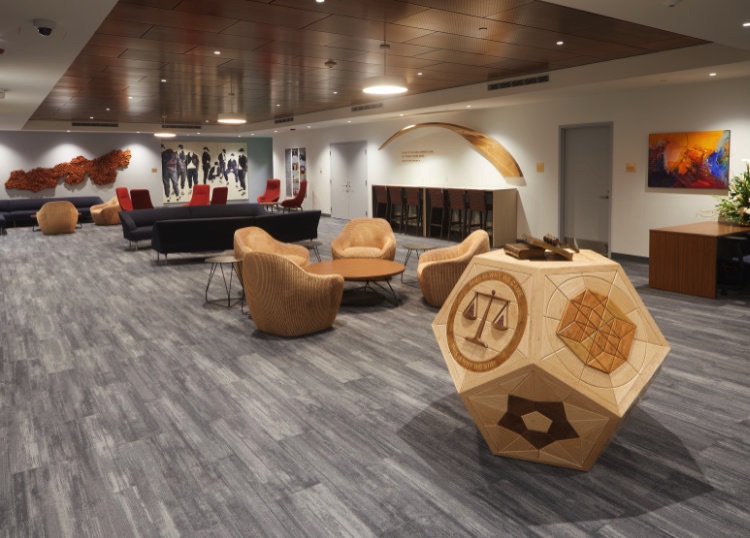
The art was sponsored by
Dr. Jean MacCormack, former Chancellor of UMass Dartmouth,
believer in the messaging power of art,
and tireless advocate for the establishment of UMass Law.